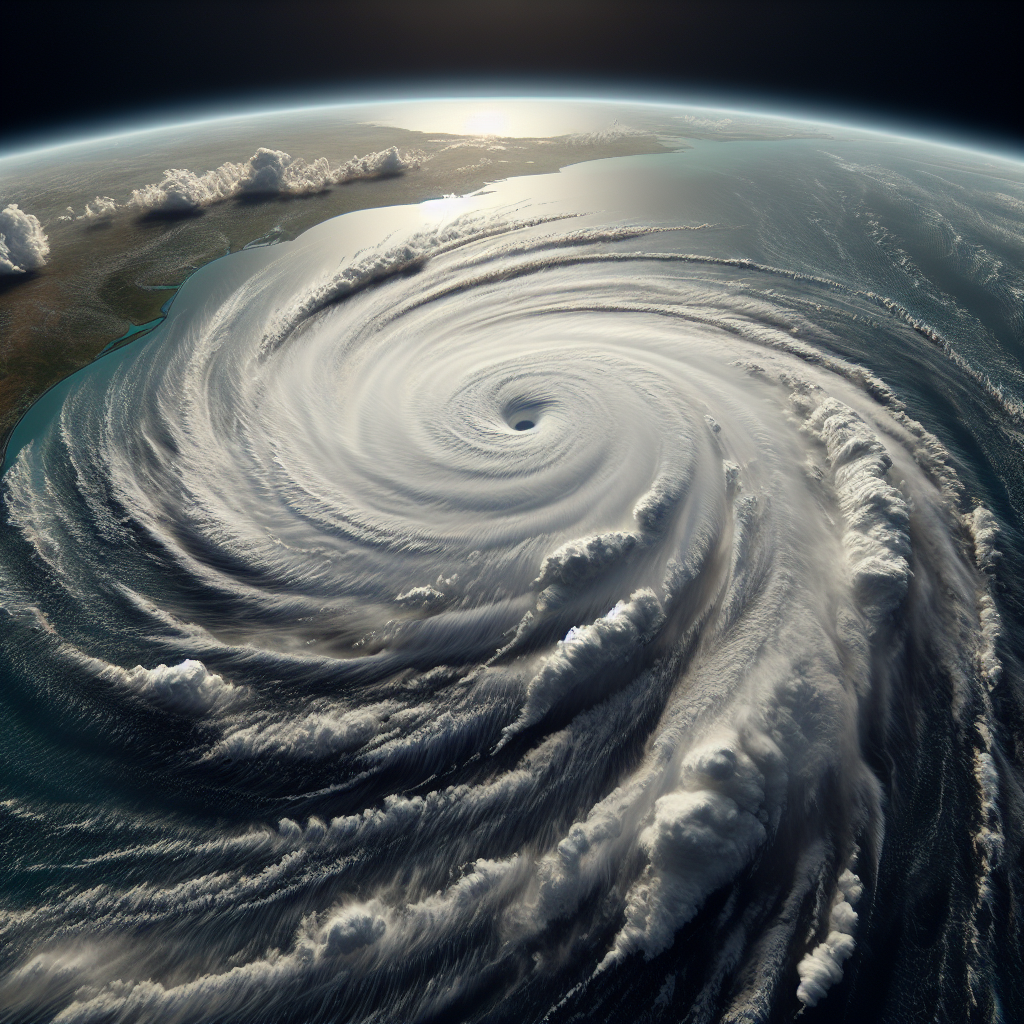Hurricane Beryl: A Grim Face of Climate Change
Hurricane Beryl, the first and earliest Category 4 storm of the 2024 Atlantic season, has caused severe destruction across the Caribbean. Scientists link its rapid intensification to climate change. The storm resulted in flash floods, power outages, and at least three fatalities, with more expected.

Hurricane Beryl barreled toward Jamaica as a powerful Category 4 storm on Tuesday after battering smaller islands in the eastern Caribbean, and scientists cited human-caused climate change as the likely culprit for the storm's rapid strengthening. The unusually early hurricane felled power lines and unleashed flash floods. It has so far claimed at least three lives.
Beryl, the 2024 Atlantic season's first hurricane and the earliest storm on record to reach the highest category on the Saffir-Simpson Scale, hit St. Vincent and the Grenadines especially hard, according to Prime Minister Ralph Gonsalves. Late on Monday, Beryl was at Category 5 strength, but weakened slightly on Tuesday.
"The hurricane has come and gone, and it has left in its wake immense destruction," he said. On one island in the Grenadines archipelago, Union Island, 90% of homes had been "severely damaged or destroyed," he added. The prime minister confirmed one death, and said more fatalities could be confirmed in the coming days.
In a video briefing on Tuesday, Grenada's prime minister, Dickon Mitchell, stressed that Carriacou and Petite Martinique, two of the three islands that make up the country, bore the brunt of the natural disaster. "The situation is grim. There is no power. There is almost complete destruction of homes and buildings," he said, citing impassable roads due to downed power lines and destroyed fuel stations crimping supplies.
Mitchell said at least two deaths were attributed to the impact of Beryl so far. The hurricane, packing maximum sustained winds of 155 miles per hour (249 kph), is currently located about 485 miles (781 km) east-southeast of the Jamaican capital of Kingston, according to an advisory from the U.S. National Hurricane Center (NHC) on Tuesday.
The NHC estimates that the massive weather system is moving toward the west-northwest at a speed of 22 mph (35 kph). "Beryl is forecast to remain a powerful hurricane as it moves across the Caribbean Sea later this week," according to a NHC post. It said a hurricane warning is in effect for Jamaica and the Cayman Islands.
In Jamaica, men hauled fishing boats out of the water and tied them down in preparation for the hurricane's arrival, while others noted there was still time to prepare on Tuesday morning. "We Jamaicans don't take things serious," said Standford Pusey, as he showed off items secured with plastic tarps.
In Fort-de-France on the French Caribbean island of Martinique, north of St. Vincent, video shared on social media showed heavy flooding in the streets as locals attempted to clear away debris. NHC also issued a hurricane watch for the southern coast of Haiti.
Some weakening was expected, but Beryl will likely remain at major hurricane strength and is expected to bring 4-12 inches (10-30 cm) of rainfall to Jamaica and southwestern Haiti through late Wednesday, according to the NHC forecast. Dozens of shipping vessels in the storm's path risk being affected, with some diversions seen in the Caribbean, according to Vortexa, which provides energy-cargo tracking data.
The unusually early timing and rapid intensification of the storm is partly due to warmer ocean temperatures, scientists say. Climate change likely contributed to Beryl's early formation, while also driving how quickly it intensified, according to scientists surveyed by Reuters, which could provide an unsettling preview of future storms.
Global warming has helped push temperatures in the North Atlantic to record highs, said Christopher Rozoff, an atmospheric scientist at the U.S.-based National Center for Atmospheric Research. The warmer waters lead to more evaporation, which fuels more intense hurricanes featuring higher wind speeds, he said. Beryl jumped from a Category 1 to a Category 4 storm in under 10 hours, according to Andra Garner, a Rowan University meteorologist. That marked the fastest intensification ever recorded before September, the peak of the Atlantic hurricane season, she added.
Video from Barbados showed waves pounding the shore of the island, breaching walkways, felling palm trees and flooding roads in Bridgetown, the capital. Beryl is also expected to approach Mexico's Yucatan Peninsula, dotted with beach resorts popular with tourists, on Thursday night.
(This story has not been edited by Devdiscourse staff and is auto-generated from a syndicated feed.)
ALSO READ
Tropical Storm Alberto Brings Heavy Rains and Flash Floods to Northeastern Mexico
Extreme Heat Claims Lives During Haj: Over 35 Pakistanis Among 900 Fatalities
Delhi Hospitals Grapple with Heatwave Fatalities
Bihar Launches High-Tech Fleet to Combat Road Fatalities
Heatwave Wreaks Havoc in Gautam Buddh Nagar: 75 Fatalities in Three Days










